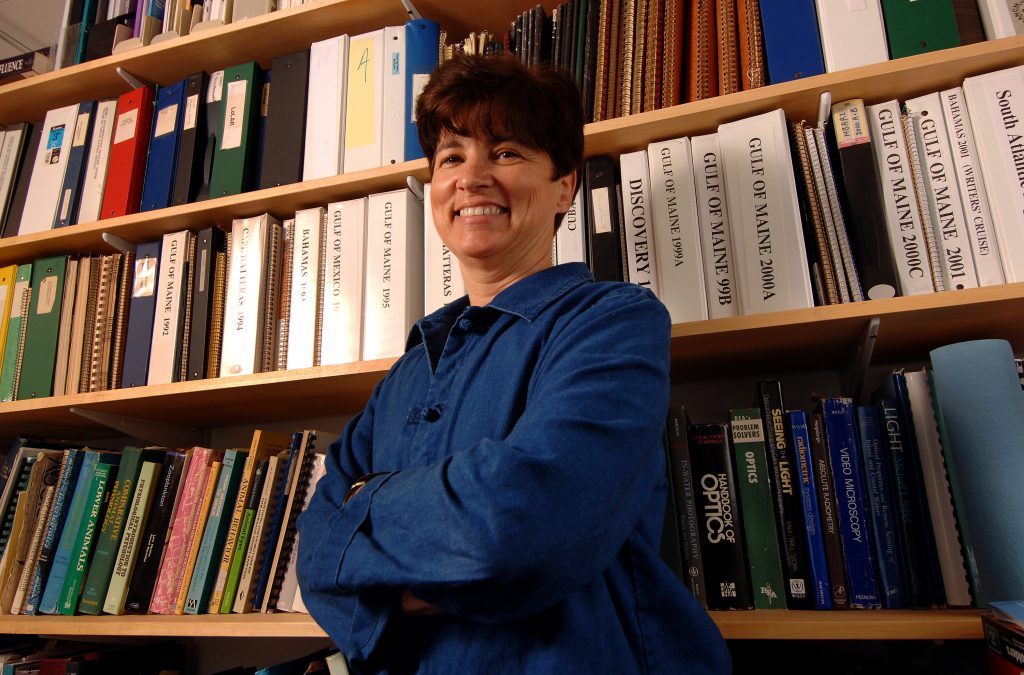If you were recently captivated by a mesmerizing video of a giant squid (only the second filmed in its natural deep sea habitat) you have marine biologist Edith (Edie) Widder to thank! She developed the technology that made it possible to get a look at these animals that previously had never been seen live.

Born and raised in Massachusetts, she studied Biology at Tufts University before going on to receive an M.S. in Biochemistry and a PhD in Neurobiology from the University of California, Santa Barbara (UCSB). She thought she would spend her career studying the neurobiology of marine organisms, but got captivated by their ability to glow and became a specialist in this phenomenon of bioluminescence.
To study this in the wild, she’d need special instruments that didn’t exist. So she had to develop new technologies including the one that led to these giant squid videos, a camera system called Medusa. To avoid scaring them off, it uses red light that they can’t see, and to lure the reluctant animals near the camera it uses LED lights that they can see, designed to mimic a bioluminescent jellyfish under attack (a signal for the giant squid that there’s another predator that it can make prey).
In 2012, this enabled her and a team of scientists to get video of a giant squid in its natural habitat for the first time on a mission off of the Ogasawara archipelago in Japan. And in June 2019 it allowed them to record a second giant squid sighting, this time in U.S. waters, off the coast near New Orleans.
She’s also developed additional technologies including These HIDEX – a bathyphotometer the U.S. Navy uses to measure bioluminescence in the ocean and EITS (Eye in the Sea) – a remotely-operated camera system to capture video of shy animals in their natural habitat. This ocean stealth surveillance technology can be used to see what’s really in oceans and answer questions like: How many animals are there? Where do they like to hang out? How do they spend their time?
And she’s devoted to protecting these natural habitats. Widder co-founded & serves as a Senior Scientist at the non-profit ORCA (the Ocean Research & Conservation Association). And she’s looking into ways in which this animal-generated light can be used to monitor the overall health of the ocean.
Some of her honors include induction into the Women Diver’s Hall of Fame in 2005 and being awarded a MacArthur Fellowship in 2006.
